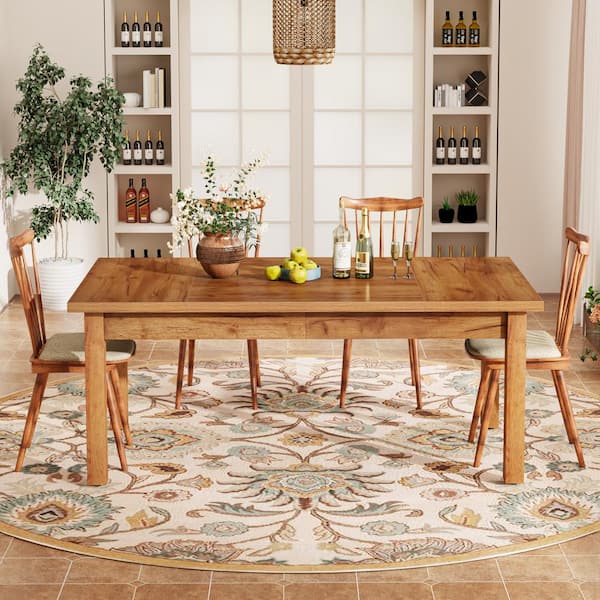A Thorough Appearance at Table Leg Styles: Finding the Perfect Suit
Selecting the right table leg style is essential for both visual allure and useful performance. Conventional 4 legs use ageless elegance and security, while the pedestal base gives boosted legroom and a modern appearance. For those with larger tables, trestle legs make certain strong support, whereas barrette legs introduce a mid-century modern-day vibe with their minimal design. The x-shaped legs mix contemporary design with improved security. Each of these options brings one-of-a-kind benefits, making the selection much more than simply a matter of choice. Check out further to uncover which style completely complements your dining room and way of life.
Conventional Four Legs
Among the different types of dining table leg styles, the conventional four-leg design stays an ageless option for many families. 4 legs offer well balanced assistance, guaranteeing the table continues to be steady and qualified of birthing significant weight (dining room table legs).
From a visual perspective, the traditional four-leg design can be conveniently adjusted to different indoor designs. Whether crafted from wood, steel, or a mix of products, these legs can be intricately sculpted, streamlined and minimalistic, or anything in between. Their flexibility enables them to enhance both rustic and modern settings perfectly.
Furthermore, the straightforward structure of the four-leg design facilitates simplicity of motion and placement within a room. Unlike even more complex bases, this style decreases obstructions, supplying sufficient legroom for restaurants. In recap, the conventional four-leg eating table leg style weds withstanding beauty with practical functionality, making it an astute option for those looking for both kind and feature in their eating furniture.
Stand Base
Commonly celebrated for its elegant and space-efficient layout, the pedestal base is a recognized option to the traditional four-leg setup in eating table leg designs. This unique base generally includes a single main column sustaining the tabletop, which can vary in kind, from ornately sculpted timber to streamlined, modern-day steel. Among the main benefits of the stand base is its capacity to make the most of legroom and seating adaptability. Without corner legs, restaurants are managed greater flexibility of activity, making it an optimal selection for round and oval tables that promote even more intimate and comprehensive events.
In addition, the pedestal base's central support can deal with substantial weight, permitting making use of heavier table tops, such as marble or thick wood. This stamina combined with its visual adaptability makes the pedestal base a preferred option in both standard and contemporary interior setups. It can flawlessly incorporate with various layout themes, from traditional elegance to minimal modernity. The main column itself provides a canvas for complex designs and creative expressions, including an element of aesthetic passion underneath the table. In recap, the pedestal base incorporates capability snappy, making it an improved and sensible choice for diverse eating environments.
Trestle Legs
Trestle legs offer a durable and timeless foundation for eating tables, characterized by their horizontal cross-bracing and durable support light beams. Stemming from medieval times, this design has actually evolved yet retained its vital framework, making it a seasonal favorite in both standard and contemporary setups. The main trestle light beam, often sustained by two or even more upright blog posts, offers outstanding security, permitting bigger table sizes without the need for extra legs.
A substantial advantage of trestle leg tables is the adequate legroom they supply. Unlike tables with four edge legs, the absence of obstructions at the table's sides provides unblocked room for chairs and diners, improving convenience and accessibility. This makes trestle tables suitable for accommodating bigger gatherings, whether in a dining-room or a reception hall.
The aesthetic versatility of trestle legs is notable. Readily available in a variety of materials such as timber, metal, and composite, they can be completed to match a broad array of interior styles. From rustic farmhouse to smooth modern-day layouts, trestle find out legs can be personalized to suit individual preferences. Their long-lasting charm and useful advantages make trestle legs an engaging selection for those looking for both style and practicality in their table.
Barrette Legs

The appeal of barrette legs hinges on their simplicity and flexibility - dining room table legs. Available in a series of materials, including steel and brass, they can be completed he said in numerous shades to match different indoor designs. Whether coupled with a rustic wood table top or a modern glass surface area, barrette legs easily blend functionality with a touch of classic charm
Toughness is another notable attribute of hairpin legs. Despite their fragile look, these legs are engineered to bear significant weight, ensuring the dining table stays stable and secure. Furthermore, they are reasonably very easy to mount, making them a popular selection for DIY enthusiasts and specialist furnishings makers alike.
X-Shaped Legs

Created from products such as steel, wood, or a combination of both, X-shaped legs can be customized to match numerous style preferences. Steel legs frequently provide a streamlined and industrial feeling, perfect for loft-style apartment or condos and contemporary eating rooms. On the various other hand, wooden X-shaped legs provide a warmer, extra rustic charm, ideal for farmhouse or eclectic interiors. The flexibility in materials allows home owners to tailor their eating tables to better fit their overall design system.
Additionally, the engineering behind X-shaped legs ensures even weight circulation, minimizing the threat of tottering and improving durability. This makes them specifically fit for larger eating tables that require additional assistance. Fundamentally, X-shaped legs mix sensible engineering with modern aesthetic appeals, making them a timeless selection for varied eating atmospheres.
Conclusion
A comprehensive understanding of dining table leg designs discloses the distinctive characteristics and advantages of each layout. Trestle legs make sure robust support for larger tables, and hairpin legs present a mid-century contemporary visual.